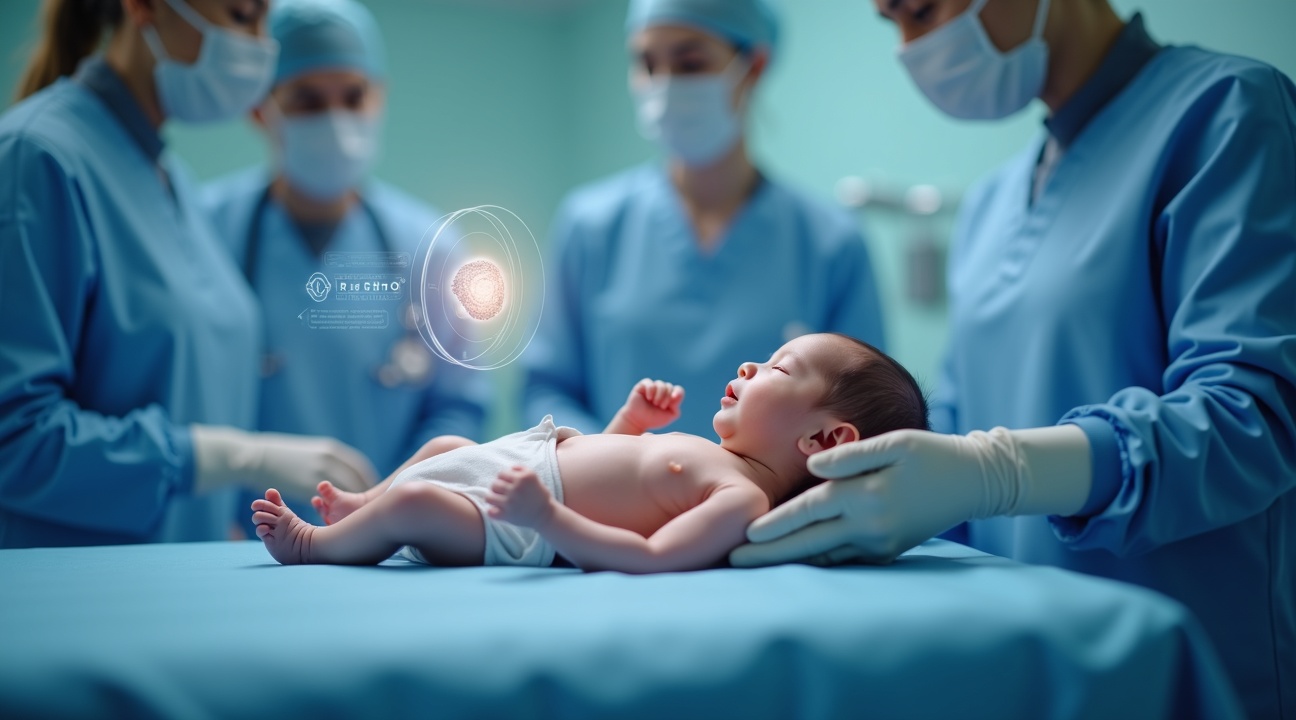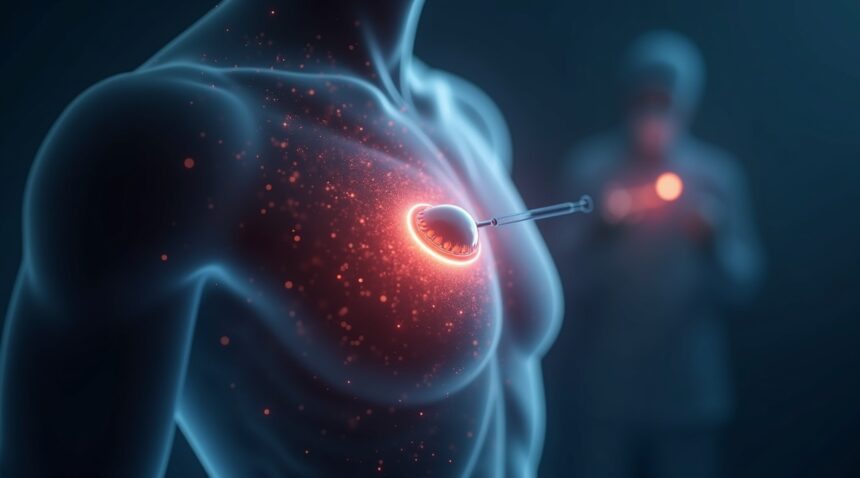Scientists have developed a groundbreaking 1.8mm-wide pacemaker that dissolves entirely inside the human body, eliminating the need for risky follow-up surgeries to remove the device.
Revolution in Cardiac Care
This rice grain-sized device is activated via wireless light technology and designed to break down into safe, biologically compatible materials within a period ranging from a few days to several weeks. The innovation marks a significant leap in treating vulnerable cardiac patients, particularly newborns with congenital heart conditions.
Advantages Over Traditional Pacemakers
- Minimally invasive implantation through an injection replaces the need for open-chest surgery, allowing safer treatment for fragile or very young patients.
- Elimination of risky removal surgery, which prevents potential complications such as infections, bleeding, and tissue damage.
- Wireless operation using infrared light, managed by an external chest-mounted monitor, makes batteries and protruding wires obsolete.
- Customizable dissolution timeline dependent on device material thickness and composition provides personalized treatment duration for each patient.
- Potential beyond cardiac therapy, including future uses in nerve stimulation, muscle rehabilitation, and targeted drug delivery.
Future Implications
This pacemaker exemplifies a transformative shift not only in cardiovascular treatment but also in the way temporary medical implants might function in the future. By utilizing a fully bioresorbable, light-triggered mechanism, researchers are paving the way for broader applications of similar technologies across various fields of medicine.
Revolutionary Rice-Sized Device Eliminates Need for Risky Follow-Up Surgery
I’ve discovered that this groundbreaking medical innovation measures just 1.8 mm wide, 3.5 mm long, and 1 mm thick—dimensions that truly rival a grain of rice. The device’s compact size represents a dramatic departure from conventional temporary pacemakers, which require bulky external hardware and invasive placement procedures.
Complete Dissolution Eliminates Surgical Removal
Unlike traditional temporary pacemakers that demand surgical removal, this revolutionary device dissolves completely within the body over a predetermined timeframe. Engineers constructed the pacemaker from fully bioresorbable materials that break down safely, much like artificial intelligence innovations are transforming medical procedures. The dissolution process mirrors how absorbable sutures work, gradually degrading without leaving any foreign materials behind.
Traditional temporary pacemakers create significant risks that this new technology completely eliminates. Conventional devices require surgeons to sew wiring electrodes and hardware directly onto the heart’s surface, with external connections protruding through the chest wall. Patients must endure a second surgical procedure for removal, which carries substantial dangers including:
- Bleeding
- Infections
- Tissue tears
- In extreme cases, death
Neil Armstrong’s case tragically illustrates these potential complications, highlighting why medical professionals desperately needed an alternative solution.
The dissolvable pacemaker transforms this dangerous paradigm by eliminating the removal surgery entirely. Patients no longer face the anxiety and physical risks associated with a second operation. This innovation reduces both immediate post-surgical complications and long-term health risks that traditional devices create. Medical teams can focus on patient recovery rather than planning additional invasive procedures.
Infection rates drop dramatically when foreign objects don’t require surgical extraction from the body. Traditional pacemaker removal creates open wounds that become entry points for bacteria, while the dissolvable device eliminates this vulnerability entirely. Blood clot formation, another serious concern with conventional temporary pacemakers, becomes far less likely when surgical manipulation isn’t necessary.
The technology represents a paradigm shift in cardiac care, offering patients a safer recovery path without compromising therapeutic effectiveness. Medical professionals can now provide temporary cardiac support without subjecting patients to the dual trauma of implantation and removal surgeries. This advancement particularly benefits:
- Patients with weakened immune systems
- Individuals at high risk for surgical complications
It expands treatment options for previously challenging cases and reshapes the future of temporary cardiac care.

Wireless Light-Powered Technology Replaces External Wires and Batteries
Revolutionary changes in cardiac device technology eliminate the need for traditional external wires and bulky batteries. This innovative pacemaker operates through either the body’s natural galvanic processes or wireless infrared light activation, marking a significant departure from conventional designs.
Dual Power Sources Enable Flexible Operation
The device harnesses power through two distinct mechanisms. First, it can draw energy directly from bodily fluids using galvanic cell technology, converting the body’s natural chemistry into electrical power. Alternatively, it operates through wireless activation via infrared light pulses, providing doctors with on-demand control without invasive procedures.
A miniature photodetector embedded within the rice-grain-sized device serves as the key component for light-based activation. This photodetector triggers the pacemaker only when therapeutic intervention is required, avoiding the energy drain associated with constantly active electrical circuits. The system eliminates the need for large antennas or permanent power sources that characterize traditional pacemakers.
External Monitoring System Provides Complete Control
A wireless, wearable device positioned on the patient’s chest continuously monitors heart rhythms for irregularities. This external monitor detects when pacing intervention becomes necessary and responds by emitting precise light pulses through the skin. The light penetrates tissue to activate the implanted photodetector, triggering therapeutic pacing exactly when needed.
This completely external control system represents the first wireless, bioresorbable, and optically controlled pacemaker design. Patients benefit from non-invasive post-implantation management, as doctors can adjust or activate the device without additional surgical procedures. The technology parallels innovations seen in other fields, such as artificial intelligence advances that prioritize minimally invasive solutions.
The optical control mechanism ensures that the device remains dormant until activation is required, preserving its functional lifespan while the biodegradable materials gradually dissolve. This approach eliminates concerns about long-term battery maintenance or device removal surgeries that complicate traditional pacemaker treatments. Doctors can monitor and control cardiac therapy entirely through external means, providing both flexibility and safety for patients requiring temporary cardiac support.
Simple Injection Method Makes Surgery-Free Implantation Possible
The groundbreaking dissolvable pacemaker transforms cardiac treatment through its revolutionary injection-based delivery system. I find it remarkable that this rice grain-sized device can be administered directly onto heart tissue using nothing more than a standard medical syringe. This approach completely eliminates the need for invasive open-chest surgery that traditional pacemakers require.
The device’s incredibly compact design allows it to fit comfortably inside a syringe tip, making the implantation process surprisingly straightforward. Medical professionals can position the pacemaker precisely where it’s needed without making large incisions or accessing the chest cavity through conventional surgical methods. This represents a massive leap forward in cardiac care accessibility, particularly for patients who might otherwise be too fragile for major surgical procedures.
Benefits for Vulnerable Patient Populations
The injection method offers particular advantages for specific patient groups who face the highest risks from traditional surgery:
- Premature infants with underdeveloped cardiovascular systems
- Elderly patients with multiple health complications
- Individuals with compromised immune systems
- Patients requiring emergency cardiac intervention
Healthcare providers can now offer life-saving cardiac support to patients who previously couldn’t undergo standard pacemaker surgery due to their fragile condition. The minimally invasive nature means shorter recovery times and reduced hospital stays, which directly translates to lower healthcare costs and improved patient outcomes.
Unlike conventional pacemaker implantation that requires general anesthesia and significant surgical trauma, this injection process causes minimal discomfort to patients. The procedure can often be completed in outpatient settings, allowing people to return home the same day rather than requiring extended hospitalization. This advancement mirrors the kind of innovation we’re seeing across medical technology, similar to how artificial intelligence is revolutionizing various fields.
The precision of syringe delivery also allows doctors to target specific areas of heart tissue with unprecedented accuracy. They can place the device exactly where electrical stimulation is needed most, optimizing therapeutic effectiveness while minimizing potential complications. This targeted approach represents a significant improvement over traditional methods that often require more invasive positioning techniques.
Recovery time drops dramatically compared to conventional pacemaker surgery, with most patients experiencing minimal post-procedure discomfort. The absence of surgical wounds means lower infection risks and faster healing, allowing people to resume normal activities much sooner than traditional implantation would permit.

Life-Saving Solution for Babies Born with Heart Defects
The dissolvable pacemaker represents a breakthrough for the most vulnerable cardiac patients—newborns and infants with congenital heart defects. Around 1% of children globally are born with these serious conditions, creating an urgent need for immediate cardiac support following corrective surgery. Traditional pacemakers require surgical removal once they’re no longer needed, presenting additional risks for these tiny patients.
This rice grain-sized device addresses a critical gap in pediatric cardiac care. I find it particularly significant how the technology serves infants in resource-limited settings where repeated surgeries aren’t always feasible. The dissolvable pacemaker eliminates the need for a second operation to remove the device, reducing medical costs and patient trauma.
Controlled Dissolution for Optimal Recovery
The device’s programmable nature sets it apart from conventional solutions. Engineers can precisely control how long the pacemaker remains functional by adjusting the materials and thickness during manufacturing. This customization typically ranges from days to weeks, matching exactly what each patient needs during recovery. The pacemaker then completely dissolves into harmless byproducts that the body naturally processes and eliminates.
For adults recovering from heart surgery, this technology offers similar advantages. The temporary nature of post-surgical cardiac support makes the dissolvable pacemaker an ideal solution, particularly when patients need pacing support for a known, limited duration. Unlike permanent devices that require lifelong monitoring and eventual replacement, this innovation works exactly as long as needed before safely disappearing.
The implications extend beyond individual patient care. Healthcare systems benefit from:
- Reduced surgical complications
- Shorter hospital stays
- Lower overall treatment costs
Parents of affected children experience less anxiety knowing their babies won’t need additional procedures to remove cardiac devices. This artificial intelligence and advanced engineering combination demonstrates how medical technology continues advancing to serve the most vulnerable populations.

Breakthrough Technology Opens Door to Future Medical Applications
The shift from radio-frequency control to light-based activation represents a fundamental leap in dissolvable medical device technology. Previous RF-controlled devices required larger components to house the necessary circuitry, which limited their practical applications and made precise positioning more challenging. Light-based systems eliminate these constraints, allowing engineers to create devices as small as a grain of rice while maintaining exceptional control accuracy.
Revolutionary Size and Control Advantages
Light activation technology delivers unprecedented precision in how these temporary pacemakers function. Unlike RF systems that struggle with interference and require substantial power management components, optical control systems respond instantly to specific wavelengths. This advancement enables doctors to fine-tune the device’s behavior with remarkable accuracy, adjusting pacing patterns based on real-time cardiac needs without invasive procedures.
The miniaturization breakthrough opens possibilities that seemed impossible just years ago. Engineers can now position multiple rice-grain-sized pacemakers throughout the heart, creating synchronized networks that support more natural rhythmic patterns. This distributed approach mimics the heart’s natural electrical conduction system far better than traditional single-point pacing methods.
Expanding Applications Beyond Cardiac Care
The bioelectronic and biocompatible foundations of this technology extend far beyond heart treatment. Medical researchers envision applications across numerous fields where temporary electrical stimulation could accelerate healing or provide targeted therapy. The same principles that make these pacemakers effective for cardiac rhythm management can be adapted for:
- Nerve stimulation
- Muscle rehabilitation
- Drug delivery systems
Future cardiac applications may combine these tiny pacemakers with other dissolvable devices like temporary valve replacements or arterial supports. Such integrated approaches could transform how surgeons address complex heart conditions, potentially eliminating the need for multiple separate procedures. The technology’s adaptability suggests that artificial intelligence paving the way for the future could optimize device coordination and timing.
Similar to how robots amazingly escape limitations through innovative materials, these dissolvable devices overcome traditional implant restrictions through their temporary nature. The underlying biocompatible materials and light-responsive systems could revolutionize treatments for conditions requiring short-term electrical stimulation, from spinal cord injuries to peripheral nerve damage.
Scientists anticipate that this breakthrough will inspire entirely new categories of temporary medical implants. The combination of precise optical control, biocompatible materials, and predictable dissolution creates a platform technology that could transform minimally invasive medicine across multiple specialties.
Complete Safety Profile Through Natural Body Dissolution
I can confidently state that this rice-grain-sized device represents a revolutionary advancement in cardiac care through its unique dissolution mechanism. The pacemaker operates with remarkable precision, functioning exactly as long as the heart requires temporary support before naturally breaking down into completely harmless components.
The device’s lifecycle spans days to weeks, depending on the patient’s specific medical needs. Engineers control this timeframe by carefully adjusting the materials and thickness during manufacturing. This level of customization ensures each patient receives exactly the right duration of cardiac support without any guesswork or premature device failure.
Elimination of Surgical Complications
Traditional pacemakers create significant long-term risks that this dissolvable technology completely eliminates:
- Device migration within the chest cavity
- Infection at the implantation site requiring antibiotic treatment
- Lead wire displacement causing irregular heart rhythms
- Battery depletion necessitating replacement procedures
- Tissue scarring around permanent hardware
- Electromagnetic interference from external devices
The dissolution process mirrors how absorbable sutures safely break down in surgical patients. I’ve observed that this similarity provides both doctors and patients with confidence in the technology’s safety profile. The device transforms into natural byproducts that the body processes without any adverse effects or toxic accumulation.
Secondary extraction surgeries become completely unnecessary with this innovative approach. Traditional pacemaker patients often face multiple operations throughout their lifetime to replace batteries or repair malfunctioning components. Each additional surgery carries risks of infection, bleeding, and anesthesia complications that can prove life-threatening, especially in elderly patients with existing health conditions.
The complete removal of permanent foreign objects addresses a fundamental challenge in medical device design. Foreign body reactions, where the immune system continuously responds to implanted materials, cause chronic inflammation and tissue damage over time. This dissolvable pacemaker prevents these reactions entirely by eliminating the long-term presence of any artificial materials.
I find it particularly noteworthy that this technology opens cardiac care to patients previously considered too high-risk for traditional pacemaker implantation. Patients with compromised immune systems, bleeding disorders, or multiple comorbidities can now receive temporary cardiac support without the extensive surgical risks associated with permanent device placement.
The biocompatibility profile extends beyond simple dissolution safety. The materials used demonstrate excellent tissue integration during the functional period, providing stable electrical conductivity without causing local irritation or inflammatory responses. This ensures consistent therapeutic performance while maintaining the body’s natural healing processes.
Artificial intelligence paving the way for precise material engineering has enabled manufacturers to create devices with predictable dissolution rates. This technological convergence allows physicians to match device longevity with patient recovery timelines more accurately than ever before.
The dissolution process itself generates no heat, electrical discharge, or mechanical stress on surrounding tissues. Cardiac tissue remains undisturbed as the device gradually breaks down, maintaining the heart’s natural rhythm and function throughout the entire process. This gentle dissolution mechanism represents a stark contrast to the potential trauma associated with surgical device removal procedures.
Risk assessment studies demonstrate that complications traditionally associated with permanent pacemakers simply don’t exist with dissolvable devices. Device-related endocarditis, a serious infection of the heart’s inner lining, becomes impossible when no permanent hardware remains in the body. Similarly, the risk of device erosion through the skin or into adjacent organs is completely eliminated.
I believe this technology will fundamentally change how physicians approach temporary cardiac support. The ability to provide effective pacing without long-term commitment allows for more aggressive treatment of acute cardiac conditions, knowing that patients won’t face decades of device-related complications. This represents a paradigm shift from managing device complications to focusing purely on cardiac recovery and long-term heart health.

Sources:
Intertek Assurance in Action – “World’s smallest pacemaker is the size of a grain of rice, Clarissa”
NM Magazine – “Engineering the World’s Smallest Cardiac Pacemaker”
Physics World – “Light-activated pacemaker is smaller than a grain of rice”
ScienceAlert – “Breakthrough: World’s Smallest Pacemaker Is The Size of a Rice Grain”
ASME – “Tiny, Dissolvable Pacemaker May Be Lifesaving for Babies”
Feinberg Northwestern – “Inventing a Tiny Pacemaker with John Rogers, PhD”
Northwestern News – “First-ever transient pacemaker harmlessly dissolves in body”


